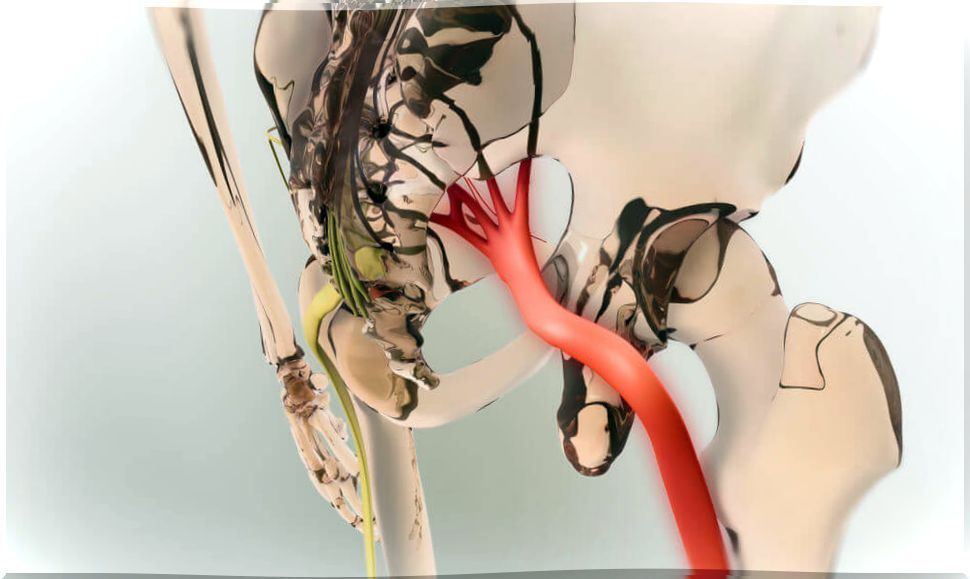Sciatica In The Legs
What do we mean when we talk about sciatica on the legs? What is this pain like, what produces it and how is it relieved? These and other questions we will answer below.
There is a very frequent pain for many people that affects the sciatic nerve. Unfortunately, sciatica is all too common to suffer from chronic.
Sciatica
As a general rule, the term sciatica refers to irritation of the sciatic nerve at some point in its extension. Today it has been discovered that irritation of the sciatic nerve is caused by compression of the same.
Like the other types of nerves, it originates from the spinal cord. Thus, the small roots that come out of this structure unite to form the largest nerve in the body.
Later, it is spread over the buttocks and legs to reach the outer edge of the feet. In this way, it innervates all the muscles of the lower extremities. Its endings also occupy the skin, providing it with sensitivity.
What are the symptoms of sciatica?

Pain
In general, patients develop a series of signs that can be associated with this medical disorder. For example, among the most frequent symptoms is pain, which can vary in intensity, location, etc.
Pain is the most characteristic symptom of a sciatica attack. There are clinical cases in which the patient feels continuous pain for several days. However, it can appear spontaneously and with greater intensity.
In most cases, the pain appears from the buttocks to the knee and can even reach the feet. At other times the pain can also appear in the lower back (lumbociatalgia).
It always develops in a single leg and can be intensified on certain occasions, for example, when coughing, but it never alters the patient’s sleep.
Other symptoms
- Numbness, tingling, or tightness in the skin. As a general rule, it occurs in the same areas where the discomfort is felt.
- Muscular weakness. On the other hand, this problem affects the quality of life and independence of patients. Thus, the reduction in movement causes the patient to limp, have difficulty getting up and sitting down, etc.
What are the causes of sciatica?

Sciatic nerve compression can occur due to different medical conditions:
- Bone fractures
- Piriformis syndrome. It occurs when the sciatic nerve crosses the piriformis muscle instead of surrounding it. Thus, when contractures are generated, they press on the sciatic nerve.
- During this condition, the uterus presses on pelvic structures that could cause contractures.
- It is rare, but it can appear in the form of chondrosarcoma. The nerve can also be compressed if there is a metastasis in the region.
- Lumbar canal stenosis. In general, it develops in elderly people and as a consequence of osteoarthritis of the spine.
- Vertebral disc herniation. It is one of the most frequent triggers. As a general rule, the vertebral discs are located between the vertebrae. In this way, it protects them and gives flexibility to the spine. However, the discs can shift abnormally and compress the roots of the sciatic nerve.
- Other diseases. We can include, for example, Paget’s disease.
What is the diagnosis of sciatica?
On the other hand, the medical team usually check the patient’s history, their lifestyle and the symptoms that the patient is suffering. Thus, among the most common tests to identify this disorder are:
- General physical examination. In general, the expert compares the affected side with the normal one. The sensitivity and muscular response of the legs are checked.
- Lasègue maneuver and Bragard maneuver.
- Other routine medical tests such as blood and urine tests to rule out other abnormalities.
What is the treatment of sciatica?

Also, the specialists will recommend the patient a series of guidelines to alleviate the discomfort. As a general rule, in most clinical cases the disorder disappears within a few days.
However, it usually reappears in the future. Among the most frequent treatments we can highlight:
- Use of medications. They usually include pain relievers (to relieve pain) and anti-inflammatories. Corticosteroids can also be given at other times.
- Relative rest.
- Apply cold or heat as recommended by the doctor. This depends on the moment of establishment, the state of evolution of the compression on the nerve, the cause, etc. In general, heat is more effective than cold.
- Massages carried out by experts, in the worst cases it is necessary to carry out a rehabilitative treatment with the help of physiotherapists in combination with pharmacological treatment.
Although sciatica pain can be severe, it can be treated and resolved in a short period of time. Only in extreme cases is surgical treatment usually resorted to.
In the event that relief is not experienced, the patient should always inform their physician before taking any action. In this sense, it is worth remembering that self-medication is not recommended, as it could be counterproductive.









